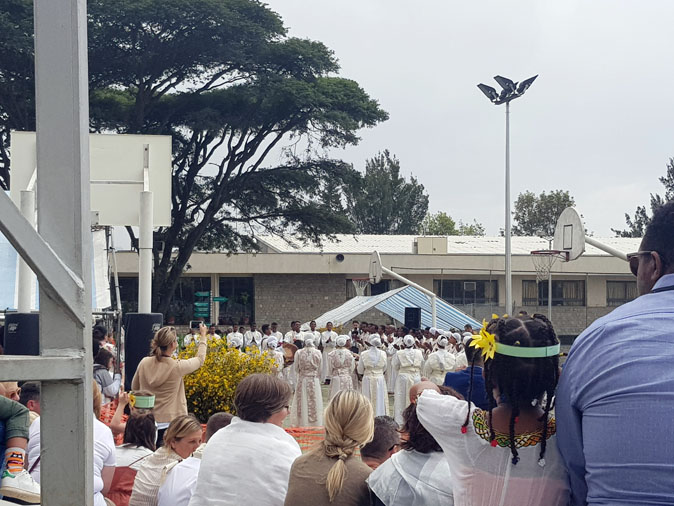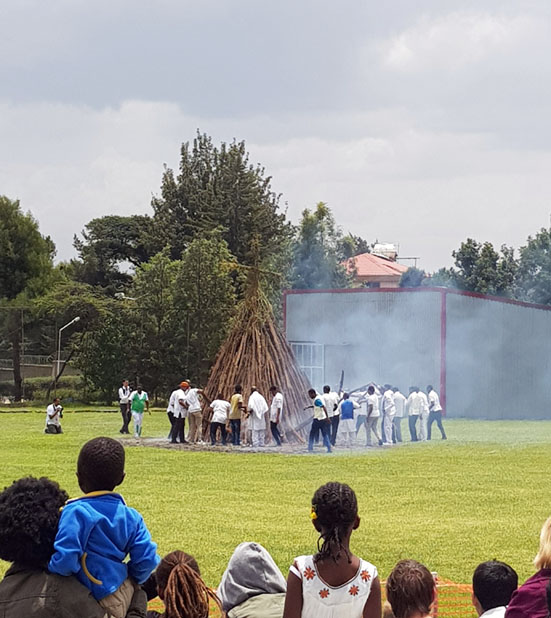On September 26th, teachers, parents and students of International Community School (ICS) dressed up in traditional clothing and gathered after school to celebrate early one of the most cheerful annual religious holidays, Meskel. It is a religious event performed on September 27th in the Ethiopian and Eritrean Orthodox which celebrates the fourth century discovery of the True Cross (which Jesus Christ was crucified on) by the Roman Empress Helena or also known as Queen Eleni.
This commemoration is based on the belief that an angel came into Queen Eleni’s dreams and told her to start a bonfire and follow the smoke in order to find the place where the cross was buried. From that day and on, the tradition of kindling a bonfire with a cross on top is preserved until today through Meskel to celebrate its finding.




The crowd observed the bonfire flaming energetically in amazement and seemed to talk about the cross that was on top of the bonfire. When I asked my Ethiopian friend, she told me that just until a few generations ago, people would observe the direction that the cross would fall in order to determine whether they have good luck or not at that time of the year.
It was very interesting to see students, even foreign kids, dressed up in Ethiopian traditional clothes to celebrate this holiday. From my experience of living in various countries, it is very unusual to see students voluntarily wear their traditional clothing to school unless it is like International Day where everyone is expected to wear their country’s traditional costumes. Thus, it was fascinating to see Ethiopian students wearing full traditional costumes from head to toe, even with matching hair accessories and footwear. The students and the celebration demonstrated how ICS truly embraces the culture of its community and tries its best to allow other foreign students to directly explore and experience the culture of the country they are living in. I hope to see more schools or even workplaces to follow the spirit and mindset of ICS and preserve their local traditions as well.

Ga Yun (Lynna) Kim
Grade 11
International Community School of Addis Ababa
By Ga Yun (Lynna) Kim

